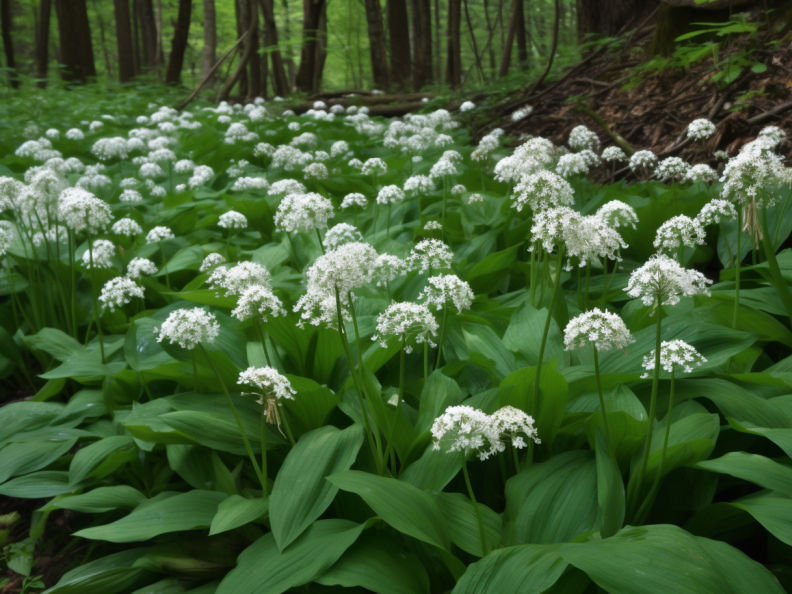Wild garlic: confusion often leads to poisoning
The consumption of toxic doubles can have serious consequences
Advertisement
Wild garlic belongs to the allium family and is one of the best known native wild herbs. Harvested fresh in spring, many people use the plant in the kitchen for versatile dishes, such as soups, sauces and salads. "Although the garlic-like odor is a typical characteristic of bear's leek, the plant is often confused with the poisonous lily of the valley or meadow saffron," says Professor Dr. Dr. Andreas Hensel, President of the Federal Institute for Risk Assessment (BfR). "Such mix-ups lead to cases of poisoning every season, some of which are fatal."

Computer generated picture
Wild garlic (Allium ursinum), popularly known as forest garlic, grows in herb-rich, shady and nutrient-rich deciduous and mixed forests, riparian forests, parks and kitchen gardens. In spring, two juicy green lance-shaped leaves usually sprout from small bulbs, which are also used in cooking. The young leaves resemble those of the poisonous lily of the valley (Convallaria majalis) and the very poisonous meadow saffron (Colchicum autumnale). This often leads to confusion, as shown by many years of documentation in the poison information centers of the German states and at the BfR. In particular, accidental consumption of the highly toxic meadow saffron has led to severe or even fatal poisonings in the past. Consumption of lily of the valley can lead to diarrhea and vomiting and, in rare severe cases, to cardiac arrhythmias. In cases of poisoning with leaves of the meadow saffron, those affected suffer from severe gastrointestinal complaints after a latency period of 6-12 hours. This is followed by a 1-3 day asymptomatic phase until finally multi-organ failure occurs.
Especially in the months of April and May, the cases of poisoning after collecting supposed wild garlic accumulate in Germany, but also in Austria, Switzerland and Croatia.
To distinguish wild garlic from its poisonous doppelgangers, it is usually sufficient to rub a green leaf between the fingers. If the typical garlicky smell of wild garlic does not appear, it is better to leave the herb and clean your hands thoroughly. However, the odor test has its pitfalls. If the smell of leek from a previous test still sticks to the hands, this can lead to a false result. Anyone collecting wild garlic should therefore be familiar with the plant and all its characteristics in order to be able to distinguish it reliably from poisonous plants. The BfR advises that in case of doubt, it is better to avoid eating wild garlic that you have collected yourself.
In the food trade, wild garlic is often part of the seasonal vegetable assortment and comes from controlled cultures. It is also possible to buy plants or seeds in specialized stores and grow them yourself. In this way, consumers do not have to forego the pleasure and avoid the risk of poisoning.
If health complaints occur after a meal with supposedly used wild garlic, a poison information center should be consulted immediately or medical advice sought.
Note: This article has been translated using a computer system without human intervention. LUMITOS offers these automatic translations to present a wider range of current news. Since this article has been translated with automatic translation, it is possible that it contains errors in vocabulary, syntax or grammar. The original article in German can be found here.

























































